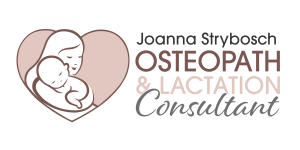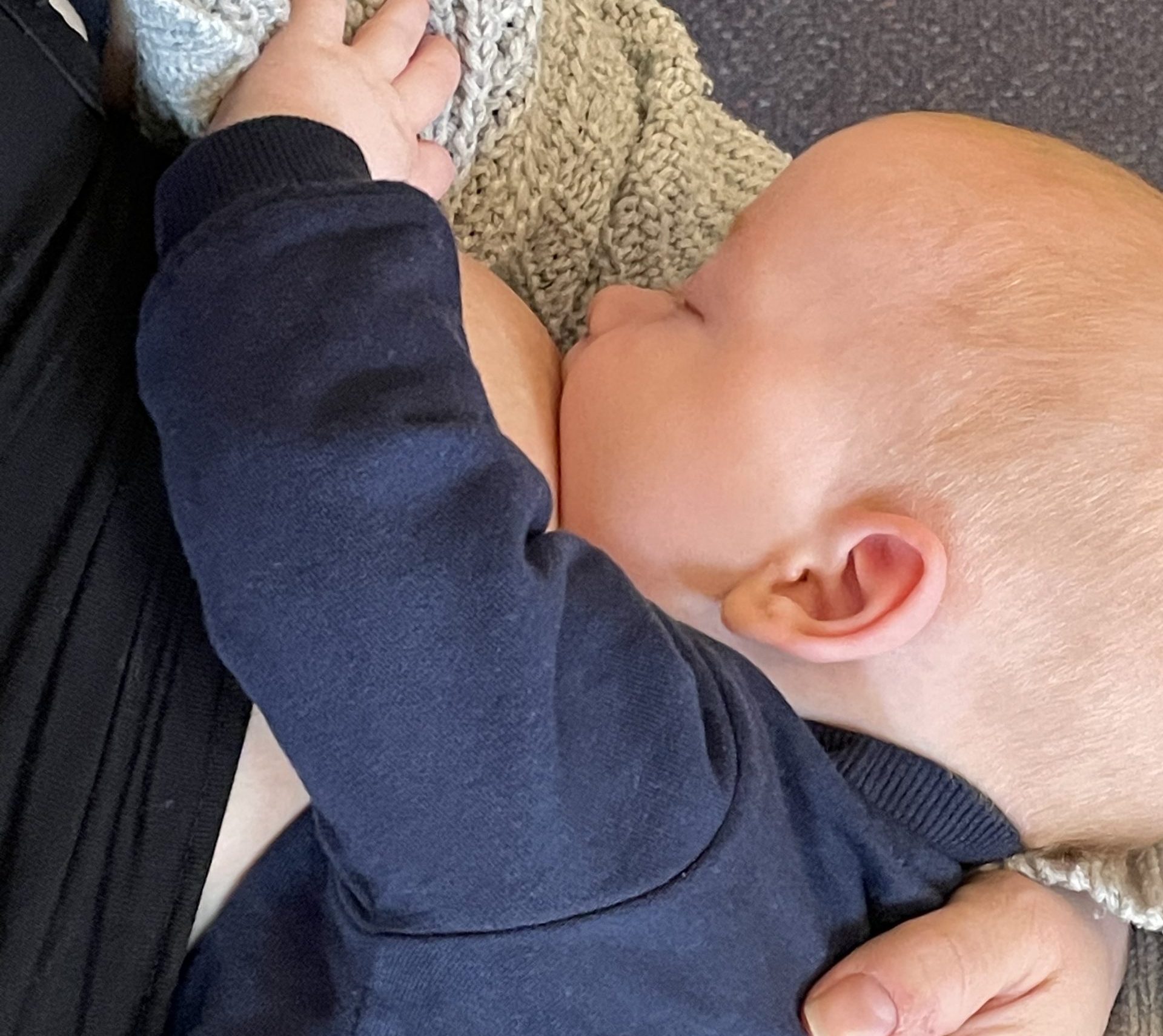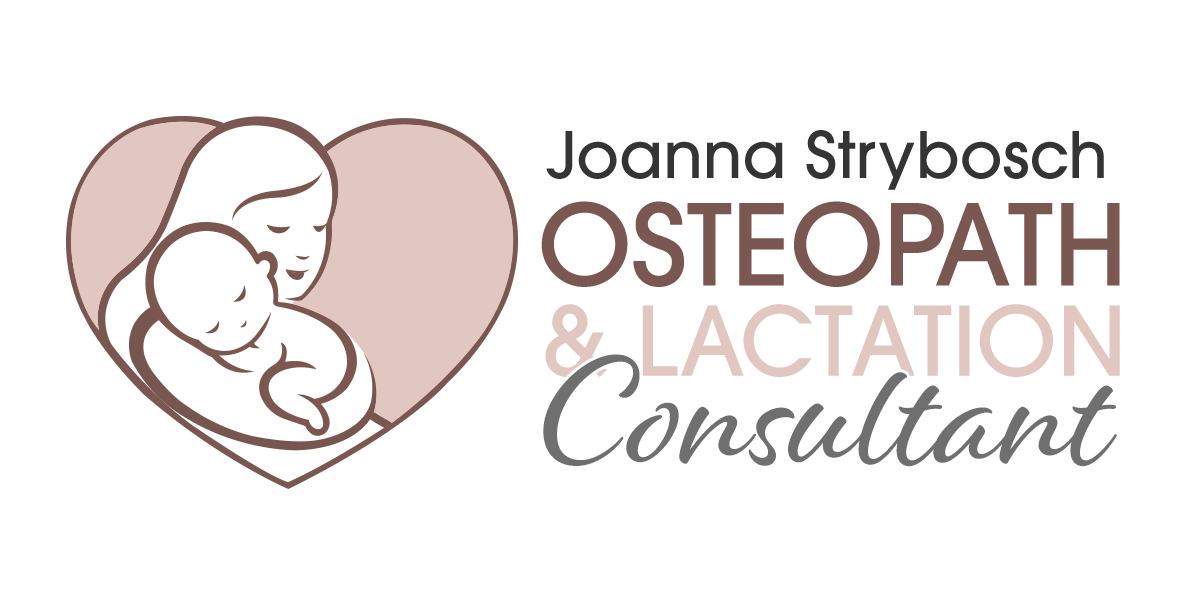Author: Joanna Strybosch
In my osteopathic and lactation consulting practice I see quite a number of babies who have a persistent head tilt or turn. This condition is called torticollis (latin for “twisted neck”) and most of these cases are what we call congenital muscular torticollis. This means the baby was born with it and its origin is muscular.
When the sternocleidomastoid (SCM) muscle in the side of the neck is shortened, contracted or tight, it produces a characteristic tilt of the head to the affected side as well as a turn away from that side. In some babies, the head tilt component is more noticeable and in others it is the turn. The condition makes it difficult and uncomfortable for the baby to hold their head straight or to turn it the other way.
The cause of congenital muscular torticollis is usually due to the way the baby was positioned in utero. When a developing foetus grows in a restricted position within the confines of the uterus, their head can be abnormally tilted to one side. This persistent position impacts the way the SCM muscle grows and develops and then after birth the altered tone of the muscle affects its function and we see the characteristic postural changes.
Sometimes a baby’s head tilt is not very noticeable at birth, and it is not until the baby reaches a few weeks or even months of age that a caregiver may begin to notice it. However, it can be a missed cause for early breastfeeding difficulties.
In order to latch correctly, a baby must be able to position at the breast comfortably. If a baby has restricted movement in their neck from torticollis, there will usually be challenges for baby to turn into the breast on one side and this will manifest as difficulty latching and/or sustaining a latch. Baby may have difficulty latching onto the breast altogether, they may slip on and off repeatedly, they may come off early and cry, or they may tire quickly and stop before they have had a full feed. Baby often has extra difficulty regulating their state, quickly becoming unsettled and overwhelmed at the breast, and unable to relax enough to feed well.
This is one reason I always assess a baby’s neck during a lactation consultation, and especially if mum describes a history of difficulty with latching. It is also why I often want to observe and assess a breastfeed when mum reports a head tilt or preferential turn.
As both an Advanced Pediatric Osteopath and an International Board Certified Lactation Consultant (IBCLC), I find combining these two skill sets invaluable in the assessment and management of congenital muscular torticollis and to provide good clinical outcomes.
As an osteopath, I usually provide gentle hands-on treatment to massage and relax the tight SCM muscle. I also advise parents on different home-based strategies, such as the best positions to hold baby in while breastfeeding, ways to gently and safely stretch the affected side of the neck and how to use tummy time to affectively assist in the management of this condition. Most babies go on to recover and to breastfeed well.
Photo credit: Jensen Newcomb via Unsplashed





